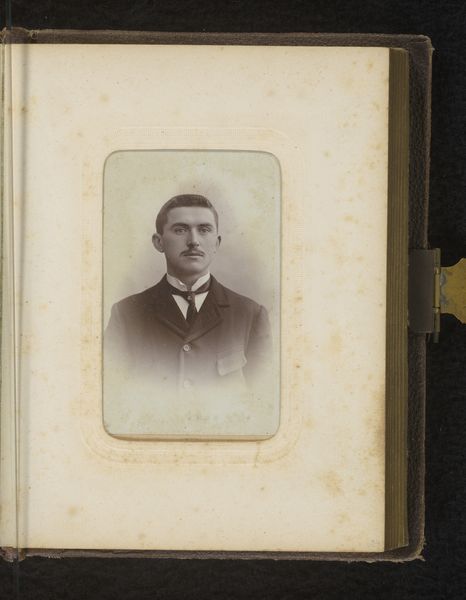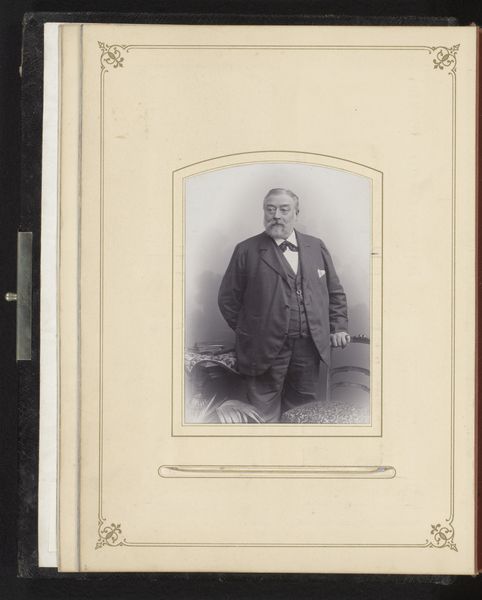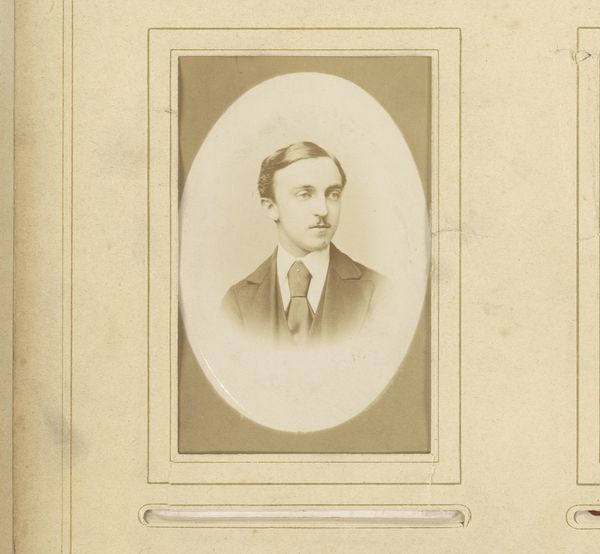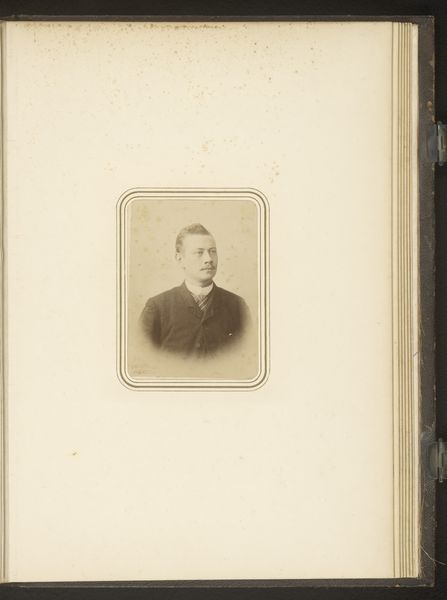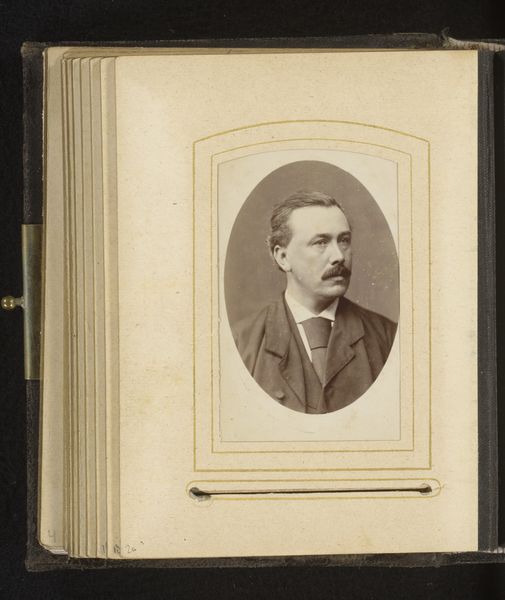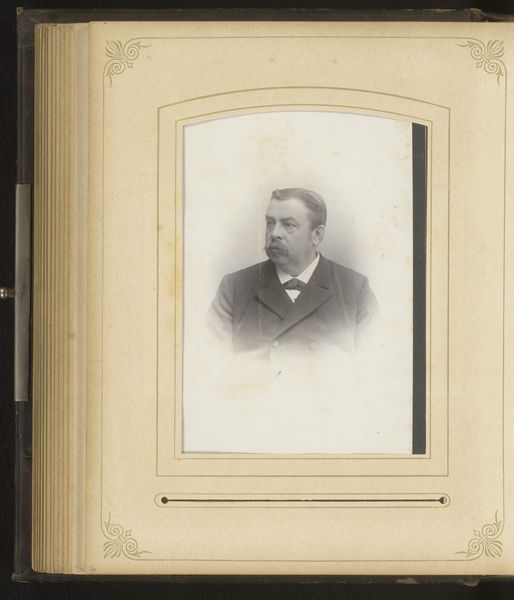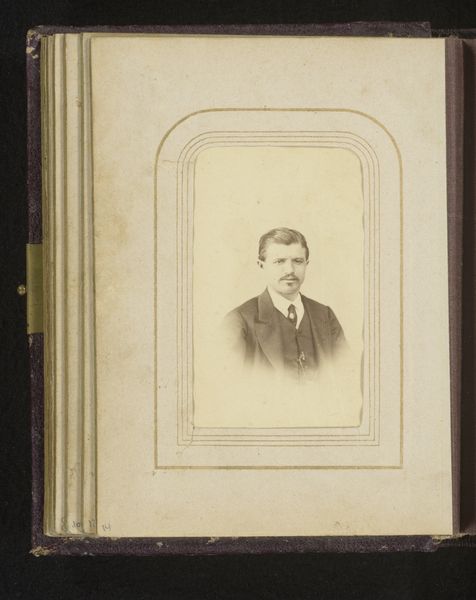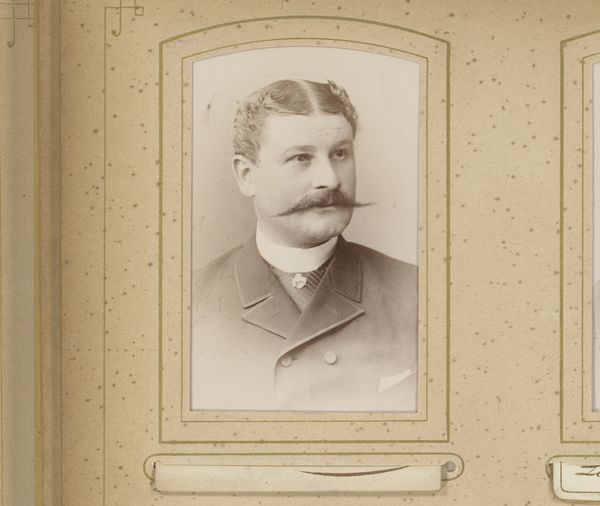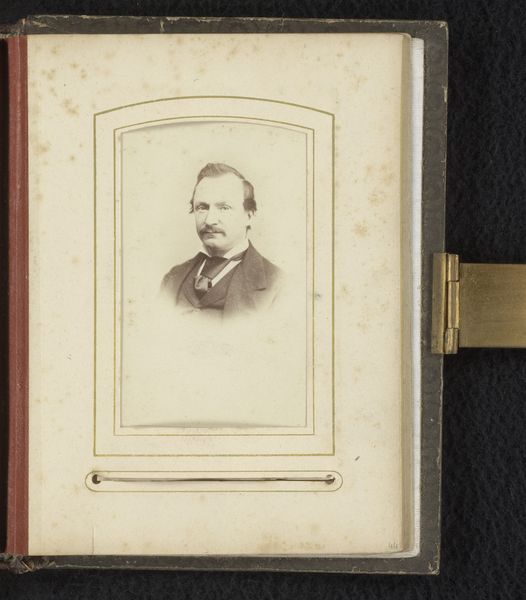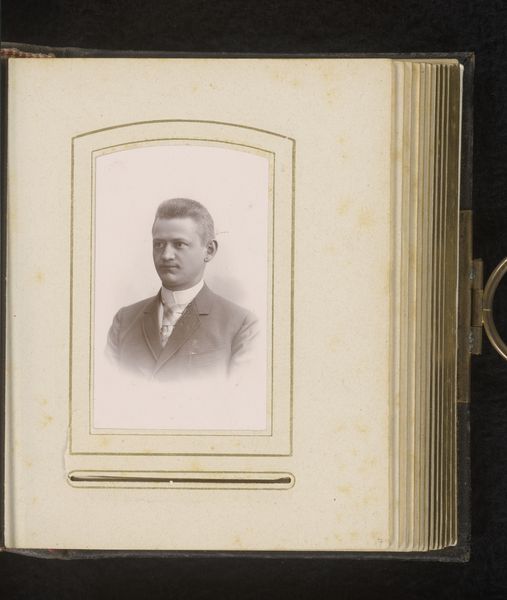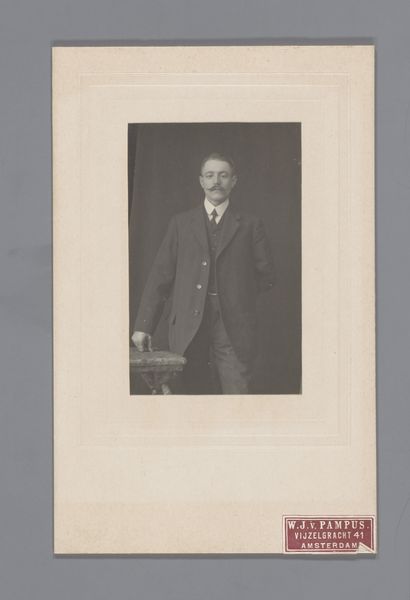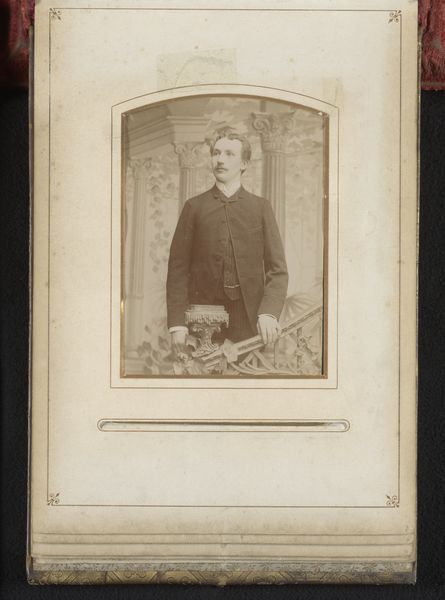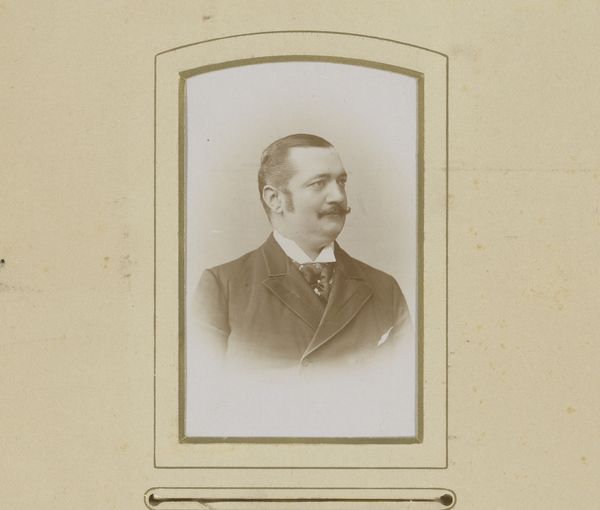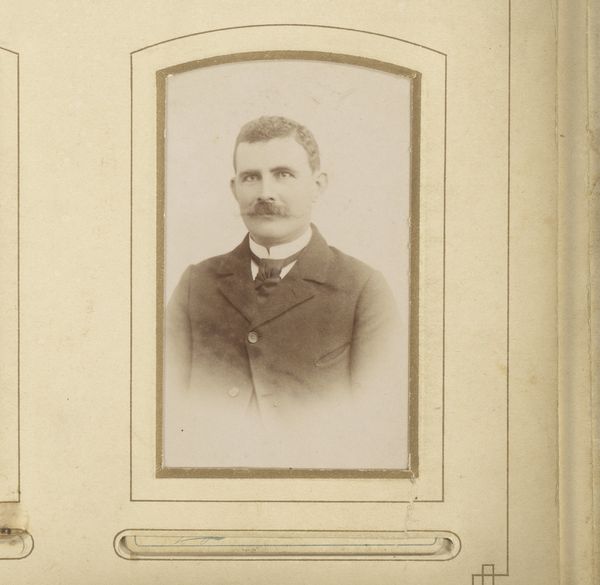
photography, pencil
#
portrait
#
photography
#
pencil
#
pencil art
#
realism
Dimensions: height 136 mm, width 96 mm
Copyright: Rijks Museum: Open Domain
Curator: Before us, we have "Portret van een man," a photograph by George Emberson & Sons, likely taken sometime between 1903 and 1920. Editor: Immediately, I'm struck by the formality, but there’s something vulnerable in his eyes. He’s staring right through me, slightly weary. The sepia tones feel like a distant echo of someone's life. Curator: Absolutely. The image, rendered in realistic detail through photography, captures not just a likeness but something of the sitter's social standing. The suit, the meticulous grooming – these are markers of a particular class and era. Portrait photography at this time became a burgeoning business and an accessible way for middle class families to assert their place in society, so how do you respond to the way it feels staged or posed, from a creative stance? Editor: It does feel posed, self-conscious almost. Like he's performing for the camera, enacting a role, which makes me think of all the unspoken expectations of that time and place. Maybe this photo was taken as an act of familial obligation. Perhaps, also it was a method for the sitter to immortalize the moment to defy his eventual mortality by being captured in portrait. I love to see the sepia rendering in a way that amplifies time, so one feels they are encountering a figure that once walked. What can you tell me about the company? Curator: George Emberson & Sons was, evidently, a photographic studio serving a particular clientele. Studios like this played a role in shaping visual culture, popularizing certain styles of representation and solidifying social hierarchies through imagery. By presenting portraits of this genre in a formal pose with specific lighting, social expectations for family, class, and cultural relevance are revealed. The artistic appeal might lie more in what these historical documents tell us about society at the time. Editor: So true! To me, what really draws you into these old portraits, these frozen moments, is this question: What was he really thinking? His mustache tells a whole other story and what a beauty! There’s so much weight there in the way light and shadow form across his face. You almost forget it's a photo and it could become an evocative painting! Curator: Precisely. The tension between the sitter’s interior world and the constructed image makes us question the function and potential art historical value. These are more than just photographs but objects worthy of collecting and investigating based on visual material culture. Editor: Indeed, it allows us to meet a stranger from the past and weave an untold story. Curator: Agreed. Thank you.
Comments
No comments
Be the first to comment and join the conversation on the ultimate creative platform.
